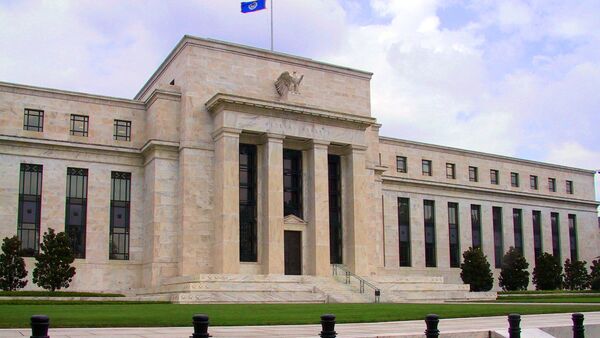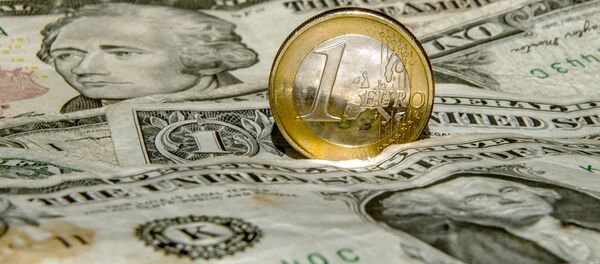Kristian Rouz — Traders claim there is an 80% chance the US Federal Reserve will raise borrowing costs during the Federal Open Market Committee (FOMC) meeting this month. The possible outcomes of such a decision are mixed, but remain alarming for economies both in North America and worldwide. An immediate effect of the Fed rate hike on the US economy would be a slowdown in economic expansion, with a possible crash in junk bonds happening, in line with negative tendencies across most sectors. For the rest of world, however, the consequences would be severe.
The unprecedented monetary easing practiced by many central banks today means that regulators in the Eurozone, Japan, and non-OPEC oil-exporters such as Mexico, Brazil and Russia, must bring down their currencies' FX rates in order to experience positive nominal growth. At this point, there are roughly $2 trln in European bonds being traded at a negative yield, meaning European debt holders have to pay for the right to hold debt securities. A similar situation is unravelling in commodity-driven economies, where a decline in oil and metals revenues is causing fiscal trouble. Consequently, many of the world's currencies are being decimated, only supporting the dollar's appreciation.
As the US dollar appreciates, commodity prices continue their fall, as the US currency is the principal tool used in international settlements. In other words, the US Fed's monetary policies have a devastating effect on the lion's share of international trade, as well as individual economies with a high level of exposure to global trade.
"The world's central bankers will print until deflation gives way," Mike Maloney, the Santa Monica, CA-based observer and founder of GoldSilver.com said, adding "they have the arrogance to just think they can control it. They can't."
There are several particular parties that will benefit from the increase in US borrowing costs. The first is US banks. Commercial borrowing in the US in currently hot due to robust economic expansion, driven by government spending, meaning bubbles might emerge in the environment where base interest rates are near zero. Commercial banks will charge their customers more for every loan they issue, thus increasing their revenues.
Among other beneficiaries are the US insurers, whose income is derived from the investment of their clients' money. Investment rates are bound to go up as base borrowing costs increase, with returns on investments in the stock of companies such as Apple, MasterCard, and O'Reilly Automotive rising as well.
However, the hike in US rates is bad news for all categories of borrowers, both in the US and overseas.
"We're looking at some real carnage in the junk-bond market," Jeffrey Gundlach of DoubleLine Total Return Bond Fund said. "This is a little bit disconcerting that we're talking about raising interest rates with the credit markets in corporate credit absolutely tanking. They're falling apart."
The US Fed's international borrowers include several overseas central banks, particularly in commodity-based economies. While raw materials were expensive, those central banks would borrow cheap US money liquidity to lend it to their respective domestic borrowers. Now they are on the verge of corporate and, in some cases, national defaults.
Such nations are caught in a stalemate of the ‘Impossible Trinity' in their monetary policies: coherent and conscious cuts in national base interest rates to support growth, openness to international markets (where commodities fall and hard currencies and investment are scarce), and money outflows due to either lack of high-yielding opportunities or political risks.
"They're likely to have to devalue," ex-US Treasury Secretary Lawrence Summers said. "You can't have relatively open capital markets, monetary stimulus and a stable currency."
That said, the currently dominant tendencies of high volatility in international trade and a rapid decline in regional competitiveness are bound to linger in the short-to-medium term, with US Fed policies being the decisive factor behind the unraveling redesigning of the global economic landscape




